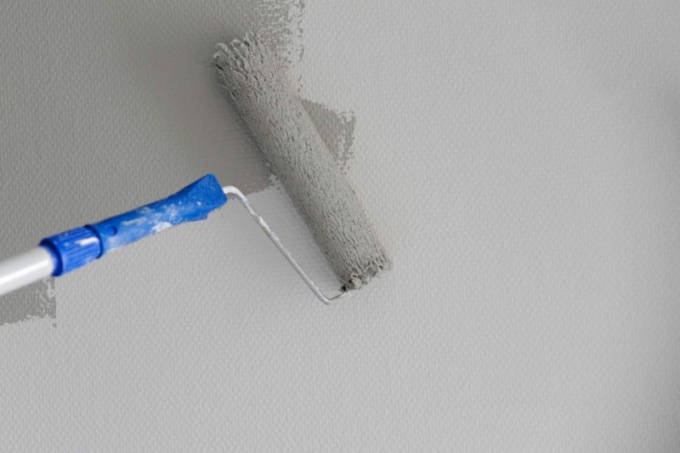Features water-based paints
Many people, to make repairs in the Soviet era, I remember how it smelled of paint. It was a sharp unpleasant smell, from which dizzy. It was inherent in oil paints and alkyd enamels. The reason for this smell are used in such materials aggressive solvents.
Today paint of a similar kind are gradually fading, giving way to materials based on water. They are safer, almost no smell, dries quickly. Another valuable ability — they are permeable, allowing the walls to "breathe". This is especially important in wet areas.
Some people don't trust water-based paints, considering them insufficiently resistant. But the chemical industry has brought them almost to perfection. Modern paint is water-based is able to withstand many cycles of washing, not afraid abrasion and weathering.
Latex paint for the bathroom
If you want to paint the walls or ceiling of the bathroom with latex paint, you need to understand that not all types are suitable for this. Today are many types of inks suitable for different applications. For example, the interior paint is not created to withstand prolonged exposure to moisture, and exterior paint is not intended for painting of the premises.
Choosing the material for coloring the bathroom, read the label carefully. Usually the manufacturer specifies for public space is that paint. Many companies just write that it is suitable for bathroom and wet rooms.
If the use a manufacturer is not listed, you can pay attention to the ingredients listed on the jar. Water-based paints come in several basic types: mineral, acrylic, latex, silicone. Paint on mineral basis are considered obsolete and bad resists moisture. For rooms with high humidity, it is better not to buy.
Another inexpensive kind of water-based paints — with the addition of PVA. Such paints are popular due to low prices. However, the disadvantages are more than advantages. They are unstable, short-lived and poorly resist humidity. For bathrooms they do not fit.
Widespread paint based on acrylic resins. It is a versatile material suitable for processing concrete, brick, plaster, and other surfaces. It has good hiding power, strong enough and well tinted. Latex paint based on acrylic is not terrible humidity. But it is not necessary to cover a surface that will directly come into contact with water. For example, it is possible to cover the ceiling in the bathroom, but it is not necessary to paint the interior walls of a shower enclosure.
Much better suited for wet areas paint is latex-based. The latex used in paints, usually made from synthetic rubber. This paint dries, it creates a waterproof film. Due to this, the material can be used in direct exposure to water. For example, latex paint can cover walls, which adjoins a bath.
Paints based on silicone resins are another kind of water-based coating materials suitable for bathrooms. They have excellent consumer characteristics. They are not afraid of moisture, but it does not create a film, allowing the walls to "breathe". Silicone paints are durable, resistant to abrasion, successfully resist the mold and mildew. The only drawback — a rather high price.
